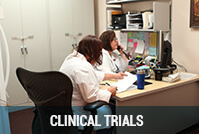APAP does not work as well as CPAP

APAP does not work as well as CPAP
The best treatment for obstructive sleep apnea is CPAP (Continuous Positive Airway Pressure). There is a variant of CPAP called APAP (Auto-adjusting Positive Airway Pressure). APAP does not work as well as CPAP.
CPAP is a pump connected by a tube to a mask (or nasal pillows) over the nose (or nose and mouth). It pumps air into the nose (or nose and mouth). This air goes into the throat, and inflates the throat. The throat then does not collapse. Snoring and obstructive sleep apnea (decreased breathing or stopping breathing in sleep because the throat collapses) go away. To set up CPAP properly, we bring the patient into the sleep center overnight. We monitor sleep and breathing, put on the CPAP device, and try different pressures (and masks) to find the right pressure and mask. The right pressure is one that controls the sleep apnea (preferably including when you are dreaming on your back, also called supine REM sleep). If the pressure is too low, you may still have sleep apnea. If the pressure is too high, it may cause unnecessary arousals and awakenings, and leaks. Too high a pressure may also cause central sleep apnea (decreased breathing or stopping breathing in sleep because the brain does not tell you to breathe). Sleep apnea tends to be worse in supine REM sleep, and we like to find the pressure that controls sleep apnea in supine REM sleep. The right mask is one that is comfortable, and does not allow much air leak.
To diagnose sleep apnea, we have to monitor not just airflow, but also breathing effort and oxygen saturation. Airflow can be quite irregular, and unless it pretty much stops, or it causes a significant drop in blood oxygen, a change in airflow may not be meaningful.
APAP makes decisions based on incomplete information
Auto-adjusting Positive Airway Pressure (APAP) works pretty much like Continuous Positive Airway Pressure (CPAP). It pumps air into the throat to keep the throat open and prevent obstructive sleep apnea (OSA). However, instead of your sleep physician determining the best pressure you should use, a computer adjusts the pressure throughout the night. Every APAP manufacturer does this differently, based on patented secret methods. It does this based on incomplete information- just the airflow (without effort or oxygen saturation). Based on this incomplete information, it raises and lowers the pressure repeatedly all through the night. So, part of the night the pressure may be too low and you still have sleep apnea, low oxygen, and related symptoms. In other parts of the night, the pressure gets too high, and there is more discomfort, higher leaks, and arousals. The higher pressure may wake you up and you may take it off and fall back to sleep. Thus, too much pressure makes it hard for patients to use it regularly. Too much pressure can also cause central sleep apnea (with the brain refusing to breathe).
The human body also adjusts to things that are constant (like CPAP), and gets used to such things. We have more difficulty adjusting to anything that is constantly changing, such as APAP. Many insurance companies require that APAP be tried unsuccessfully before switching to CPAP. If APAP seems to work, the patient stays on it. But, it is not unusual for patients to have difficulty tolerating APAP or continue to have symptoms on APAP. Other patients have increased awakenings and arousals from APAP. In that case, these insurance companies will allow us to bring you in at night and find the right pressure (CPAP) for you. Your APAP machine can then be set to CPAP mode.
If you have severe desaturations (drops in blood oxygen) with your sleep apnea, then CPAP should be adjusted to control not just the airflow but also the oxygen saturation. This is another thing APAP cannot do, as it does not measure oxygen saturation. Patients with sleep apnea with severe desaturations should not stay on APAP.









